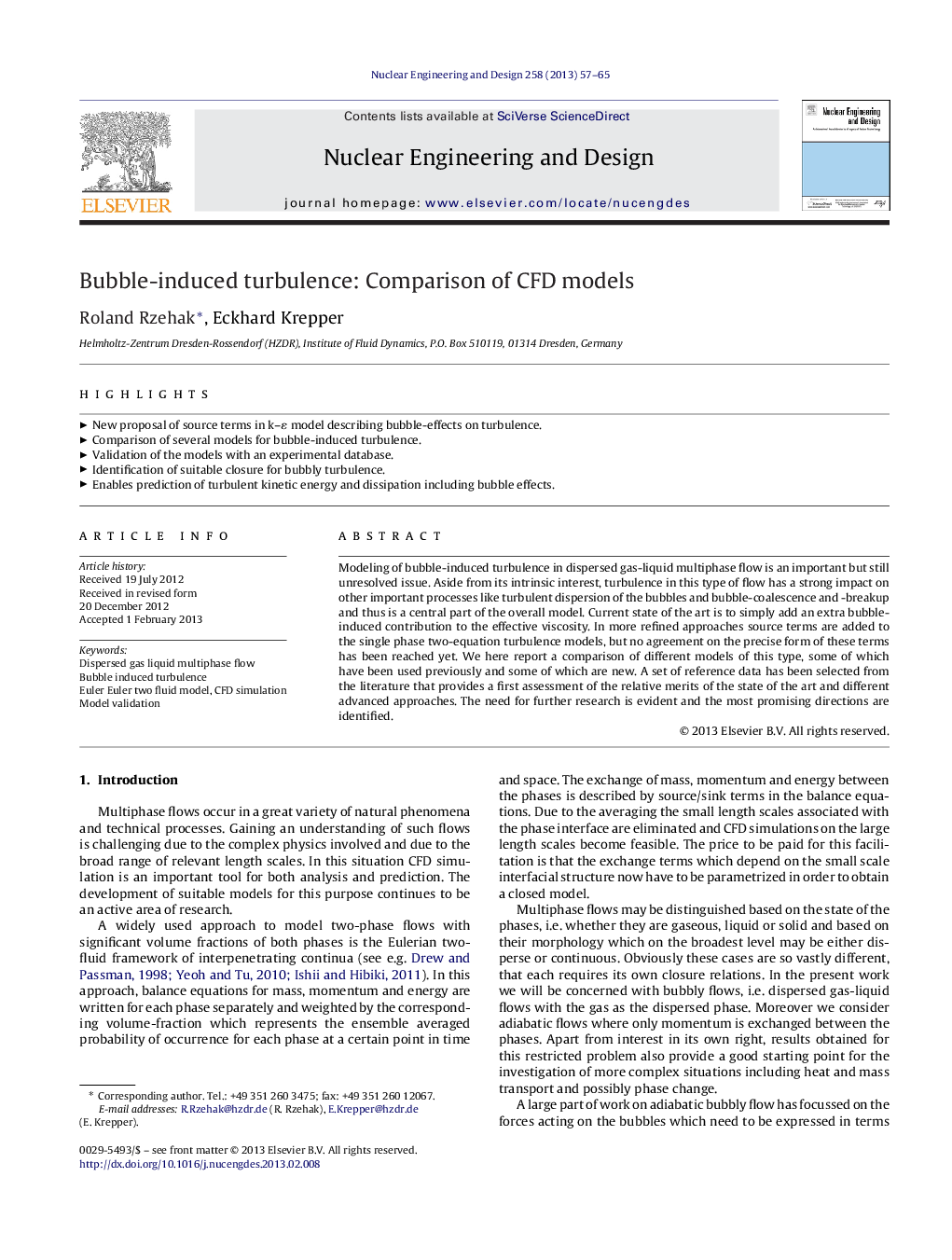| Article ID | Journal | Published Year | Pages | File Type |
|---|---|---|---|---|
| 296774 | Nuclear Engineering and Design | 2013 | 9 Pages |
Modeling of bubble-induced turbulence in dispersed gas-liquid multiphase flow is an important but still unresolved issue. Aside from its intrinsic interest, turbulence in this type of flow has a strong impact on other important processes like turbulent dispersion of the bubbles and bubble-coalescence and -breakup and thus is a central part of the overall model. Current state of the art is to simply add an extra bubble-induced contribution to the effective viscosity. In more refined approaches source terms are added to the single phase two-equation turbulence models, but no agreement on the precise form of these terms has been reached yet. We here report a comparison of different models of this type, some of which have been used previously and some of which are new. A set of reference data has been selected from the literature that provides a first assessment of the relative merits of the state of the art and different advanced approaches. The need for further research is evident and the most promising directions are identified.
► New proposal of source terms in k–ɛ model describing bubble-effects on turbulence. ► Comparison of several models for bubble-induced turbulence. ► Validation of the models with an experimental database. ► Identification of suitable closure for bubbly turbulence. ► Enables prediction of turbulent kinetic energy and dissipation including bubble effects.
